The types and principles of Coffee making skills of Italian Coffee
Many people like to drink coffee, but they don't know much about coffee, especially when they go to the coffee shop just according to their own name or according to the well-designed menu. However, if you drink more often, you will begin to get familiar with your favorite taste, sometimes try other flavors, and gradually you will want to know the difference between these coffees with different names. The following is the type and production principle of part of the coffee that I sorted out in a noon time. I hope it will be helpful to the friends who need it.
We usually drink a wide variety of coffee, most of which are just varieties of Italian espresso. This is because ESPRESSO has a strong flavor and will not be diluted with milk or other ingredients, so espresso has become a "base". Some people think that ESPRESSO is too strong and worry that too much caffeine will affect sleep or health, so they choose French coffee, milk coffee or latte. But in fact, a cup of ESPRESSO uses about 7: 18g to make 30cc coffee, while a cappuccino or latte uses 60cc, so although there is a lot of milk and foam to dilute the rich feeling of coffee, the amount of coffee has not decreased at all, but increased. Real coffee connoisseurs will mostly use ESPRESSO to measure the power of the bar, because ESPRESSO can not be covered with water and milk, so it can best show the original taste of coffee.
● Italian espresso ESPREES
To make espresso, use a mocha pot invented in Italy. This kind of coffee pot uses steam pressure to extract coffee, so that the pressurized steam extracts the inner essence of coffee directly through coffee powder, so the coffee brewed out has a strong aroma and strong bitter taste. The surface of coffee will produce a thin layer of coffee oil, which is the source of Italian coffee fragrance.
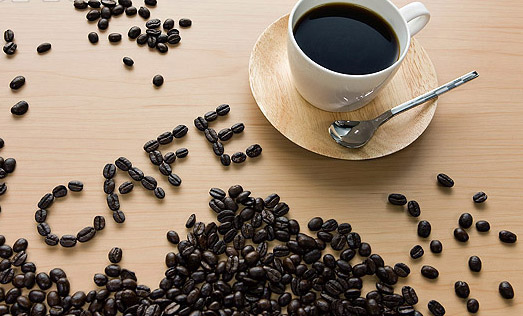
--
● cappuccino CAPUCCINO
Cappuccino is a very moderate cup of coffee, has a very strong taste, because cappuccino is added with milk foam, some people drink it to enjoy the taste of milk foam, enjoy the density and compactness of milk foam, so the proportion of milk is very important. In espresso, pour steamed milk, the proportion of coffee, milk and milk foam each accounts for 1 / 3. At this time, the color of coffee is like a cappuccino monk with a turban on his dark brown coat, hence the name.
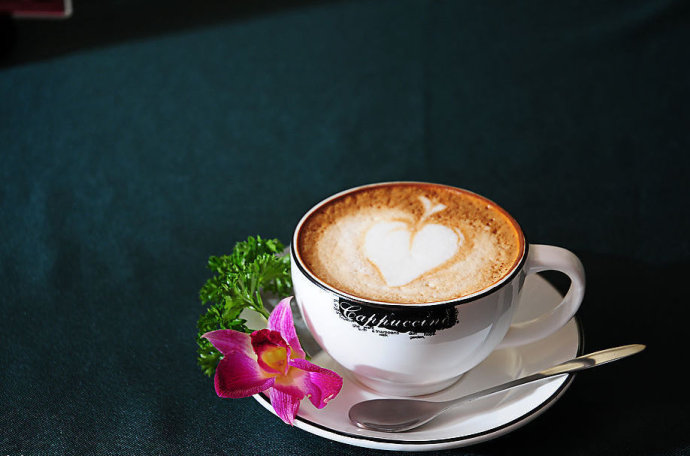
--
● latte LATTE
LATTE means milk in Italian. As the name suggests, latte coffee is made in the same way as cappuccino, except that the classic example of coffee, milk and milk foam has changed to 1:2:1. It can be said to be a cup of coffee without burden, you can drink the warmth of milk, like a cup of milk coffee, but there is coffee flavor when drinking milk.
If you add some frothy cold milk to the hot milk, it becomes an American latte. This is how Starbucks American lattes are made.
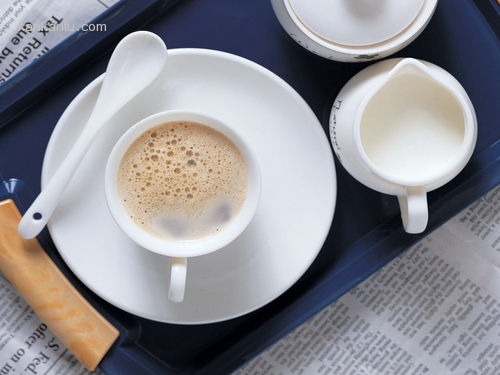
● mocha MOCHA
Mocha is diluted with a lot of milk, is a deformation of coffee, can be said to be the most fancy kind of Italian coffee, which can add cinnamon, cocoa, is no longer a simple coffee. The original meaning of mocha is chocolate, just add chocolate to the latte.
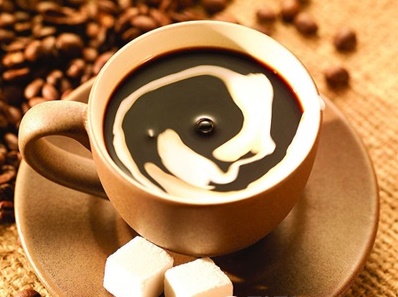
● Campbell Blue Coffee ESPRESSO CN PANNA
Add the right amount of whipped cream to the Italian espresso to make a cup of Campbell blue coffee. Because it is only added with whipped cream, it is sometimes called a "one-headed carriage". The fresh white cream floats gently on the deep coffee, just like a white lotus flower that comes out of the mud and makes one cannot bear to drink it.
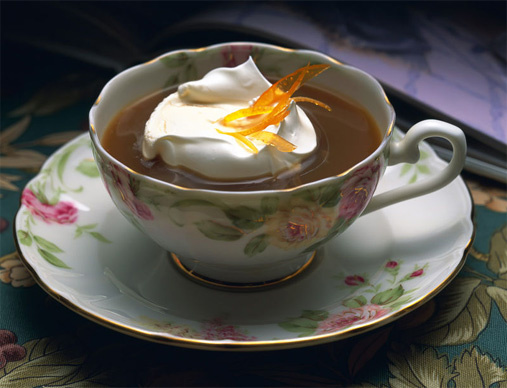
● Marchiato Coffee MACCHIATO
In Italian espresso, without whipped cream, milk and only two tablespoons of soft milk foam becomes a cup of macchiato coffee. When the foam comes into contact with the air, it will affect its consistency, so it is best to drink macchiato coffee with a mouthful of dry, like a shout cup of cocktail.
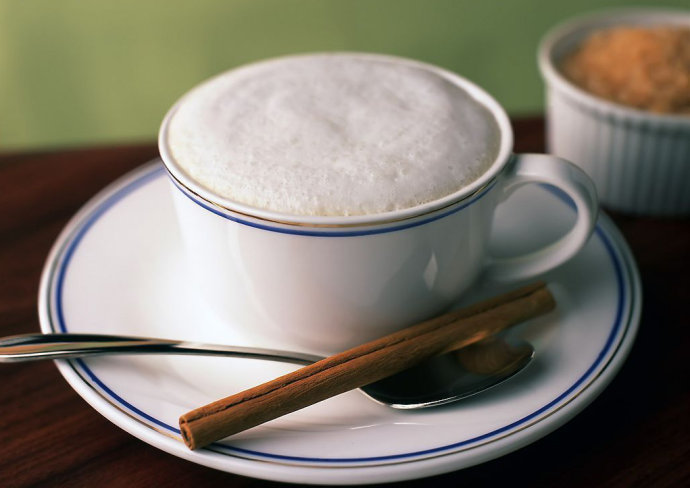
● Ole Coffee CAFE AU LAIT
Ole Coffee can be regarded as an European latte, which is quite different from American latte and Italian latte. Ole Coffee simply pours a cup of espresso and a large cup of hot milk into a large cup, and finally puts two tablespoons of whipped cream on the surface of the liquid. The biggest difference between Oulei coffee and latte is that milk and espresso are required to be injected into the cup together. Milk and coffee meet at the first time, resulting in a relaxed and free mood.
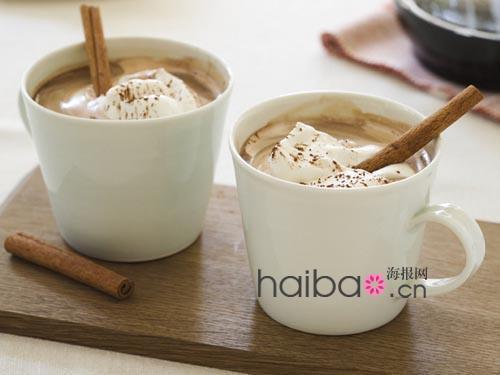
Important Notice :
前街咖啡 FrontStreet Coffee has moved to new addredd:
FrontStreet Coffee Address: 315,Donghua East Road,GuangZhou
Tel:020 38364473
- Prev
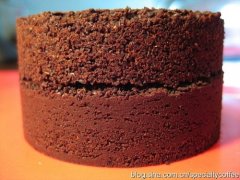
Philharmonic pressure: 30 seconds to pour out a cup of espresso
Coffee residue left after making coffee with AeroPress pressure: Philharmonic pressure (AeroPress) is a brand-new coffee making appliance launched by AEROBIE in 2006. Its inventor, Alan Adler, is a lecturer in mechanical engineering at Stanford University in the United States. It has more than 40 patents in the United States and other countries. The Philharmonic pressure is easy to use. Put coffee particles in the pressure bucket and soak in water for 10 seconds.
- Next

Macchiato (macchiato) Coffee recipe for Italian coffee
In Italian espresso, without whipped cream or milk, just add two tablespoons of soft milk foam to the coffee, so it is a cup of macchiato (macchiato). Method of making macchiato coffee material: Italian coffee: 100ml fresh milk: 300ml caramel cream: 15ml caramel syrup: 15ml cup: 500ml large cup, with coffee
Related
- Detailed explanation of Jadeite planting Land in Panamanian Jadeite Manor introduction to the grading system of Jadeite competitive bidding, Red bid, Green bid and Rose Summer
- Story of Coffee planting in Brenka region of Costa Rica Stonehenge Manor anaerobic heavy honey treatment of flavor mouth
- What's on the barrel of Blue Mountain Coffee beans?
- Can American coffee also pull flowers? How to use hot American style to pull out a good-looking pattern?
- Can you make a cold extract with coffee beans? What is the right proportion for cold-extracted coffee formula?
- Indonesian PWN Gold Mandrine Coffee Origin Features Flavor How to Chong? Mandolin coffee is American.
- A brief introduction to the flavor characteristics of Brazilian yellow bourbon coffee beans
- What is the effect of different water quality on the flavor of cold-extracted coffee? What kind of water is best for brewing coffee?
- Why do you think of Rose Summer whenever you mention Panamanian coffee?
- Introduction to the characteristics of authentic blue mountain coffee bean producing areas? What is the CIB Coffee Authority in Jamaica?

